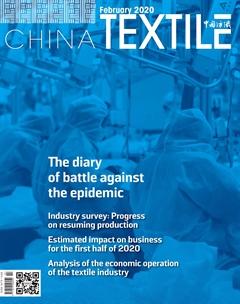Observation:How do textile companies purchase cotton now?
From the survey, as of mid-February, most of the ginners in Xinjiang that have not yet finished processing are still in a state of shutdown. First, the heads and staff of mainland enterprises are temporarily unable to return to Xinjiang (isolated for 14 days first); second, road transportation is basically stagnant; third, warehouses can only handle online and railway shipments, and other operations have been suspended. A few warehouses can ensure short-term trucking or normal loading and unloading.
More and more textile companies resumed work in mid-late February. Cotton and other raw materials are in urgent need of replenishment. How can cotton companies purchase raw materials when the epidemic prevention and control tasks remain difficult? The author believes that it is unlikely that short-term procurement personnel will go to Xinjiang, so the following points should be paid attention to:
First, pay attention to the cotton warehouse receipts of the mainland in 2018/19, and in addition, a large amount of Xinjiang cotton will be moved to the mainland in 2019/20, so the sellers profit margin is large.
Second, pay attention to the spot of cotton for bonded and customs clearance at the port. M 1 - 1/8, M 1 - 5/32 Brazilian cotton 1% tariff import cost is 13,200 - 13,300 yuan/ton and 13,400 - 13,600 yuan/ton (net weight), which has a price advantage of 300 - 400 yuan/ton compared with the inland warehouse 3128/3129 Xinjiang cotton.
Third, pay attention to the 3128/3129 grade cotton in the Yellow River Basin, such as Shandong and Hebei. On the one hand, the efficiency of road transportation in the Mainland has improved; on the other hand, the cotton prices have advantages over Xinjiang cotton and foreign cotton, and are suitable for spinning 40S and below.
Fourth, pay attention to Xinjiang cotton in the nonZheng cotton delivery warehouse in the Mainland in 2019/20. However, it is recommended that the purchaser go to the warehouse to see the goods, take samples, and test to avoid the situation where the purchase and demand do not match.
- China Textile的其它文章
- Dear readers
- The diary of battle against the epidemic
- Duan Xiaoping:Firm confidence,adapt to change,win in the future
- How is the progress of all industries in the second week of resumption of work?
- Industry survey:Progress on resuming production
- Survey on the work resumption of 4,650 enterprises in 19 clusters of cotton textile enterprises

